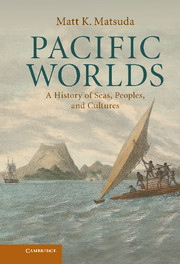Book contents
- Frontmatter
- Contents
- Illustrations
- Maps
- Acknowledgments
- Map
- Introduction: Encircling the ocean
- 1 Civilization without a center
- 2 Trading rings and tidal empires
- 3 Straits, sultans, and treasure fleets
- 4 Conquered colonies and Iberian ambitions
- 5 Island encounters and the Spanish lake
- 6 Sea changes and spice islands
- 7 Samurai, priests, and potentates
- 8 Pirates and raiders of the Eastern seas
- 9 Asia, America, and the age of the galleons
- 10 Navigators of Polynesia and paradise
- 11 Gods and sky piercers
- 12 Extremities of the Great Southern Continent
- 13 The world that Canton made
- 14 Flags, treaties, and gunboats
- 15 Migrations, plantations, and the people trade
- 16 Imperial destinies on foreign shores
- 17 Traditions of engagement and ethnography
- 18 War stories from the Pacific theater
- 19 Prophets and rebels of decolonization
- 20 Critical mass for the earth and ocean
- 21 Specters of memory, agents of development
- 22 Repairing legacies, claiming histories
- Afterword: World Heritage
- Notes
- Index
22 - Repairing legacies, claiming histories
Published online by Cambridge University Press: 05 June 2012
- Frontmatter
- Contents
- Illustrations
- Maps
- Acknowledgments
- Map
- Introduction: Encircling the ocean
- 1 Civilization without a center
- 2 Trading rings and tidal empires
- 3 Straits, sultans, and treasure fleets
- 4 Conquered colonies and Iberian ambitions
- 5 Island encounters and the Spanish lake
- 6 Sea changes and spice islands
- 7 Samurai, priests, and potentates
- 8 Pirates and raiders of the Eastern seas
- 9 Asia, America, and the age of the galleons
- 10 Navigators of Polynesia and paradise
- 11 Gods and sky piercers
- 12 Extremities of the Great Southern Continent
- 13 The world that Canton made
- 14 Flags, treaties, and gunboats
- 15 Migrations, plantations, and the people trade
- 16 Imperial destinies on foreign shores
- 17 Traditions of engagement and ethnography
- 18 War stories from the Pacific theater
- 19 Prophets and rebels of decolonization
- 20 Critical mass for the earth and ocean
- 21 Specters of memory, agents of development
- 22 Repairing legacies, claiming histories
- Afterword: World Heritage
- Notes
- Index
Summary
In 1995, Flor Contemplacion was hanged by the government of Singapore. Accused and convicted of a double murder, Contemplacion's execution set off a storm of protest in her home country, the Philippines, and resulted in a diplomatic crisis, attempted intervention by the Philippine president, and the breaking of international contracts and agreements. Contemplacion was not a known figure, nor was her crime political. She was a low-paid, overseas domestic worker with a job in Singapore away from her own family. The victims had been a fellow overseas worker and a little boy in her care. What the death of an “ordinary” woman meant to the Pacific world was a story of very old and unresolved histories.
Those histories centered on the question of labor. The transit of peoples across the Pacific is a narrative that includes legendary feats of navigation, dark records of slavery and blackbirding, and desperate flight. The nineteenth century was profoundly marked by the oceanic circuits that brought Chinese laborers to California and Australia, Japanese, Koreans, and Filipinos to Hawai‘i, and Indians to Fiji to work in mines, or on railroads and plantations. The twentieth century saw Javanese slave labor populations working in gangs across Southeast Asia, and the postwar economic migration of workers into factories, sweatshops, and domestic labor jobs.
- Type
- Chapter
- Information
- Pacific WorldsA History of Seas, Peoples, and Cultures, pp. 355 - 374Publisher: Cambridge University PressPrint publication year: 2012



